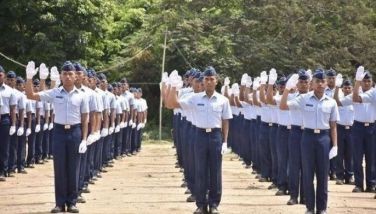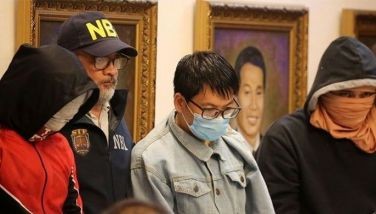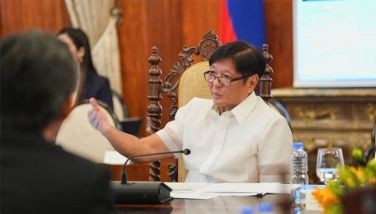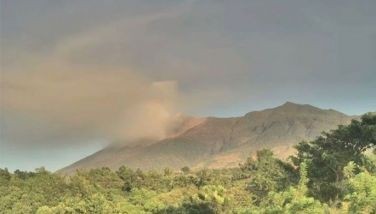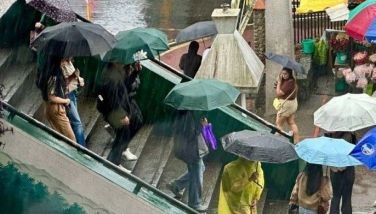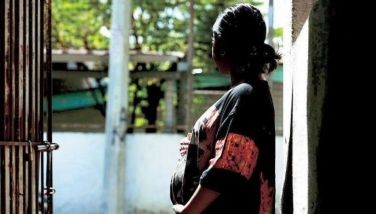Only 36% of Pinoys in Harvard Humanitarian Initiative poll 'fully prepared' for disasters
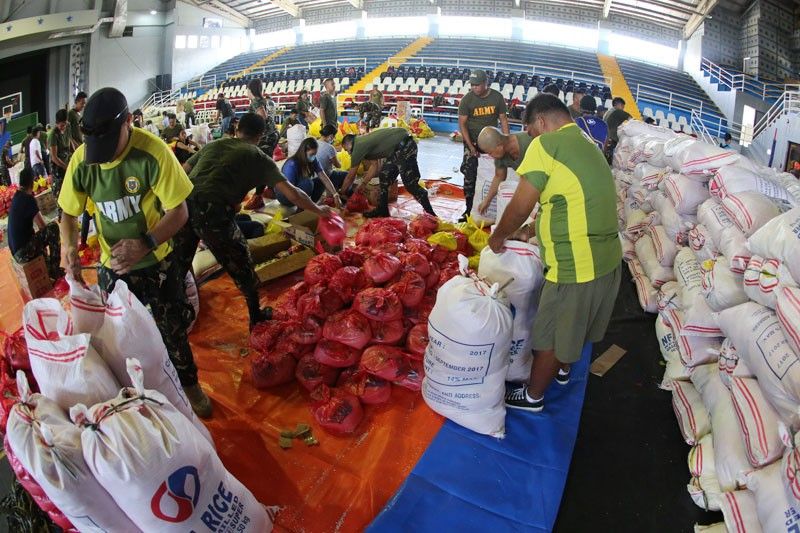
MANILA, Philippines — Majority of Filipinos believe they are not “fully prepared” for disaster, according to a recent study by the Harvard Humanitarian Initiative.
According to the poll conducted in 2017 and released on Tuesday, only 36 percent of Filipino respondents perceive themselves as “fully ready” for disasters.
This, despite the campaigns of the government, nongovernment organizations (NGOs), and media.
Nearly 47 percent of respondents claimed that they have made no preparations for a natural hazard in the last five years. In the same survey, which is part of HHI's DisasterNet Philippines project, 82 percent said they do not have an emergency kit or "go bag", while 62 percent said they have no first aid kit.
Around 83 percent of Filipinos surveyed said they only discussed emergency plans with family members when prompted.
Areas hit by typhoon 'most ready'
The study also showed that respondents residing in areas frequently hit by typhoons are the ones who think that they are more prepared. These respondents also believe they are “self-reliant” in disaster preparedness due to their previous experiences.
At least 52 percent of respondents living in Eastern Visayas felt very prepared. In Bicol, 49 percent of respondents said they are prepared while 44 percent in the Western Visayas said they were. Among respondents in the National Capital Region, 32 percent sais they are prepared for disasters.
More respondents in Bicol, and in Western Visayas and Eastern Visayas said they discuss disasters in advance
Only 31 percent of respondents in Northern Mindanao said they felt prepared for disasters, the lowest among those surveyed.
42 percent have lost propery, homes to disaster
The study revealed that around 42 percent of respondents experienced significant damage to property, assets and had been displaced from their homes due to a disaster.
The Eastern Visayas, which was hit by Typhoon Yolanda (Haiyan) in 2013, had 97 percent if respondents saying they had homes damaged destroyed by a disaster. Only 16 percent of the respondents had been displaced for at least a week and seven percent were displaced for over three months in the national level.
Aside from the dominant damage to property, the study also showed that majority of Filipinos think their capability to cope and recover is limited.
Only 22 percent said they were confident that they would recover from a future disaster while 38 percent of the respondents said they would have a hard time coping in future calamities.
According to the srudy, residents of the Visayas take the longest to recover from disasters.
'Money main barrier for disaster preparedness'
The survey also found out that most Filipinos think money is the main hindrance for them to prepare for disasters with 47.5 percent of respondents saying they lack funds.
It added that 92 percent of respondents from the Autonomous Region in Muslim Mindanao said they had insufficient funds.
Around 74 percent said they were not able to invest in disaster preparedness and 20 percent said they do not have time to get ready for disasters.
In line with this, majority of Filipinos were also determined to have no insurance for hazards. Only 19 percent said they have life insurance, 56 percent had health or medical insurance, three percent had home insurance, and only two and a half percent had asset insurance.
When it comes to assistance, 52 percent of Filipino respondents said they received aid from local government units, in line with the national disaster management’s policies.
About 57 percent of respondents said they were provided with food and water assistance, emergency shelter (five percent), medicine (eight percent), temporary employment or cash (four percent), or livelihood assistance (four percent).
Only nine percent claimed the government provided them housing and location assistance in Central Luzon, six percent in Northern Mindanao, and five percent in Eastern Visayas.
Only few Filipinos also said they received temporary employment and cash-for-work with 20 percent of them are from Eastern Visayas and 17 percent are from Western Visayas.
'First nationwide study on disaster response'
The Harvard report seek to determine “the Filipinos’ views on climate change and its anticipated impacts and offers unique reflections on Filipinos’ expectations of who is responsible for disaster response.”
HHI Resilient Communities Program Director Vincenzo Bollettino said it is the first nationwide survey of its kind.
“As an archipelago located in the Pacific Rim of Fire, the Philippines is exposed to an array of natural hazards. How Filipinos understand their own exposure to these hazards and the steps they take to cope with them is crucial to formulating relevant national policy and planning,” Bollettino said in a release.
HHI surveyed 4,368 Filipino households nationwide. — Rosette Adel
- Latest
- Trending















